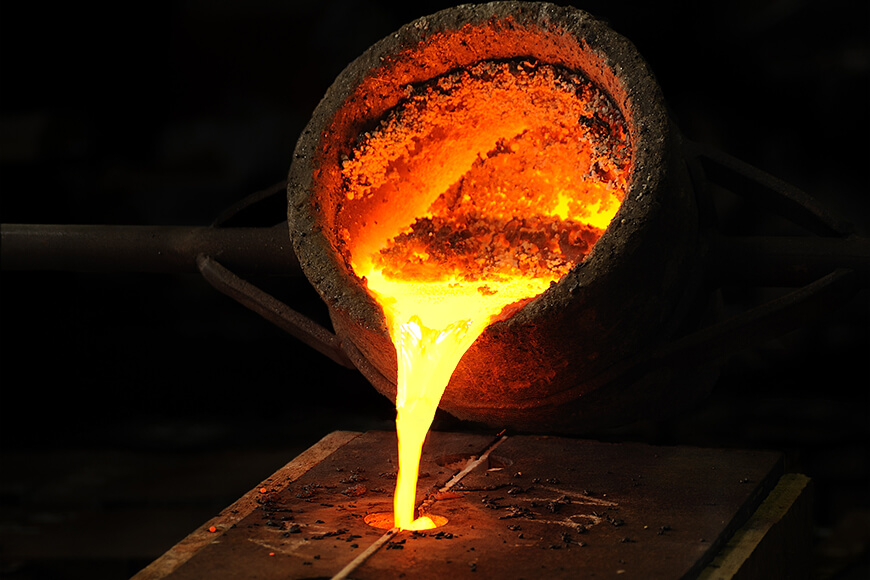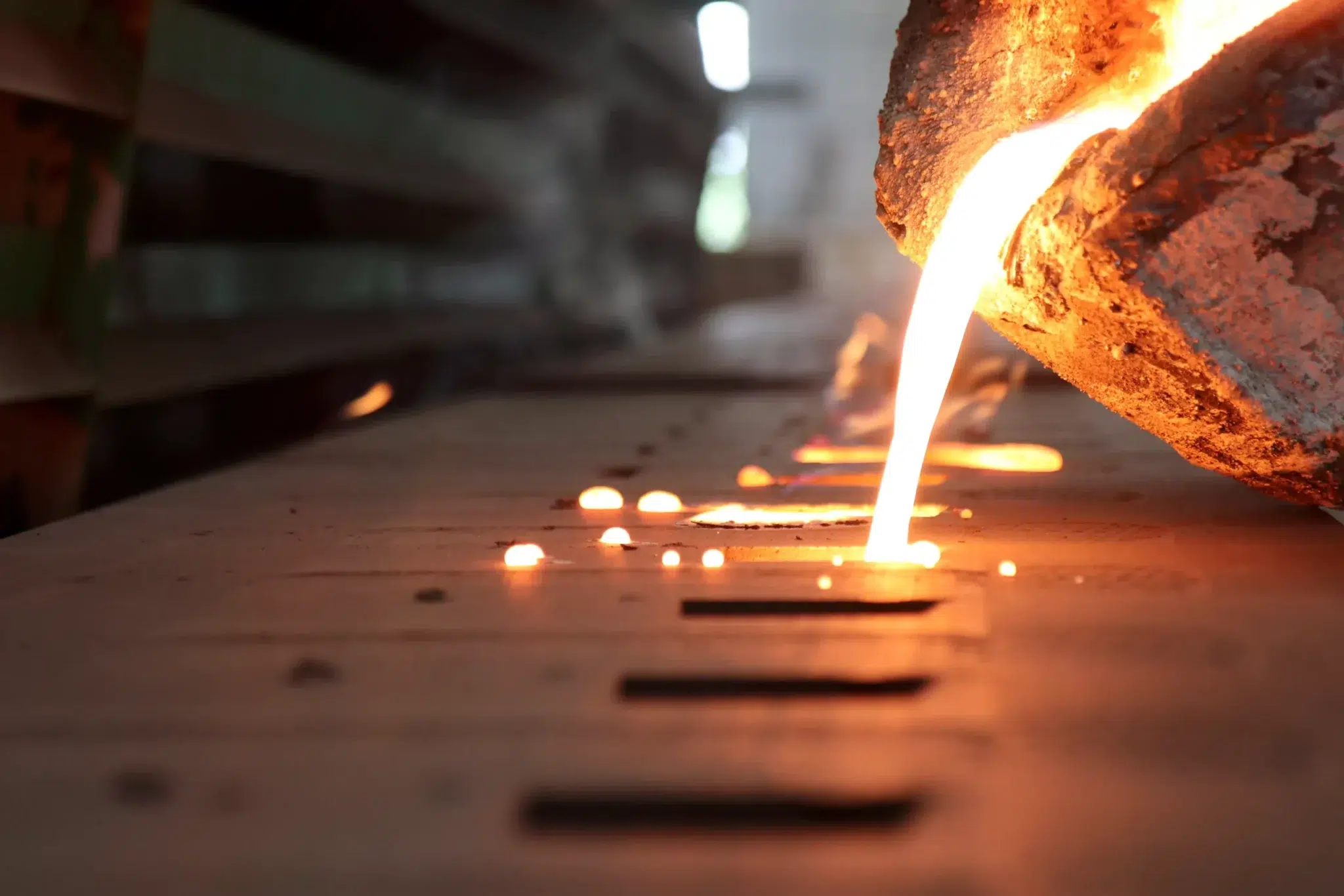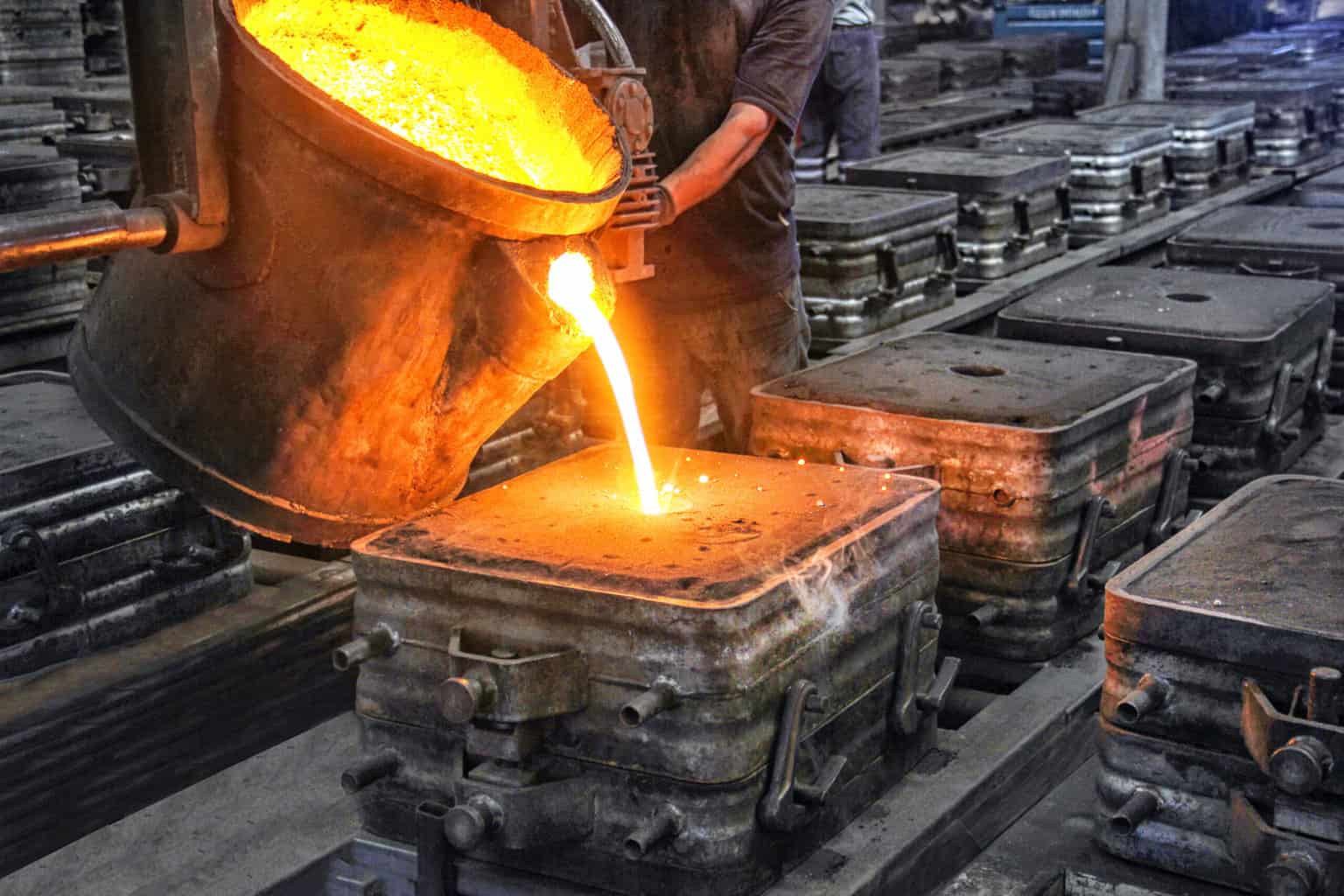How Casting Foundry Technology Enhances Quality Control Processes
Wiki Article
The Impact of Modern Technology on Performance in the Casting Foundry Sector
The Casting Foundry sector has actually experienced remarkable makeovers due to technological developments. Automation and robotics have streamlined operations, improving manufacturing prices while minimizing errors. In addition, real-time tracking and data analytics are improving decision-making processes, causing more efficient source administration. As these technologies remain to progress, they present both obstacles and possibilities. Recognizing the complete impact of these changes is essential for market stakeholders to adapt and flourish in an affordable landscape.The Role of Automation in Modern Foundries

These systems promote jobs such as mold and mildew creation, pouring, and air conditioning, permitting for real-time surveillance and changes to maximize performance. Furthermore, automation makes it possible for foundries to operate continuously, raising outcome and reducing lead times.
The combination of automated remedies also supports much better resource management, as makers can be set to use materials a lot more successfully, minimizing waste. By executing automation, modern foundries can adjust to rising and fall demand, ensuring that they stay affordable in a swiftly advancing sector. Inevitably, automation stands for a transformative pressure, redefining conventional Foundry practices and paving the method for future improvements.
Enhancing Quality Assurance Via Innovation
Innovation reinvents high quality control in factories, ensuring that items fulfill strict market criteria. Advanced evaluation systems, such as laser scanning and 3D imaging, enable exact measurement of actors elements, identifying defects at the earliest stages. These tools assist in real-time monitoring of making procedures, enabling instant modifications and decreasing variances from quality criteria.Moreover, information analytics plays an important role in quality assurance by examining patterns and forecasting potential failures, which improves the reliability of the manufacturing line. Casting Foundry. Executing artificial intelligence formulas enables factories to continuously improve their high quality assurance procedures by learning from historic information
Additionally, the combination of digital twins allows online simulations of manufacturing processes, permitting for extensive screening and validation before physical Casting happens. Collectively, these technical advancements not just raise the high quality of cast items however additionally boost consumer contentment and rely on the shop's outcome.
Decreasing Waste and Power Intake

Furthermore, the intro of 3D printing modern technology in mold and mildew production especially lowers material waste by permitting the production of complex designs without the requirement for too much machining. Energy-efficient equipment and renewable power resources are significantly being adopted, contributing to reduced operational prices and a smaller carbon impact.
These modern technologies not only improve operational efficiency but likewise advertise lasting practices within the Casting Foundry industry, aligning with global initiatives to lower ecological impacts and boost resource administration.
The Impact of Information Analytics on Decision Making
Information analytics has arised as an essential tool for enhancing decision-making processes in casting foundries. By leveraging information gathered from different stages of manufacturing, foundries can identify inefficiencies and areas for improvement. Real-time surveillance of devices performance allows supervisors to make educated choices pertaining to maintenance timetables, decreasing downtime and optimizing output.Additionally, anticipating analytics helps projection need fads, enabling factories to readjust manufacturing levels appropriately and decrease excess supply. This ability not only simplifies procedures but likewise aids in source allowance, ensuring that products are used effectively.
Data-driven insights encourage monitoring to assess the effectiveness of different alloys and materials, leading to improved product top quality. As foundries progressively embrace information analytics, the integration of these insights into tactical decision-making procedures paves the method for enhanced operational efficiency and affordable advantage in the sector.
Integrating Robotics Into the Molding Process
The assimilation of robotics right into the molding process uses substantial advantages for casting foundries. By automating tasks, these systems can minimize human mistake and boost production speed, resulting in extra effective operations. As modern technology advancements, the possibility for robotics to change conventional molding practices comes to be significantly apparent.Benefits of Robotic Automation
Robot automation uses considerable advantages in the molding process of casting foundries, improving both effectiveness and precision. By using robot systems, factories can achieve higher production prices due to the regular speed and reliability of makers. These robots can execute repeated tasks with marginal downtime, which makes best use of and improves procedures output. Additionally, the assimilation of robotics enables higher additional hints adaptability in production, enabling foundries to rapidly adjust to differing demands and complex layouts. Moreover, robotic automation adds to enhanced office security by minimizing the demand for human intervention in hazardous atmospheres. Eventually, the consolidation of robotics in the molding process causes maximized workflows, lowered functional prices, and improved product top quality in the Casting Foundry industry.Reducing Human Error
Although human ability and intuition have actually commonly played necessary functions in the molding process, integrating robotics substantially reduces the risk of human mistake. Robotics offers precision and view it now uniformity, ensuring that each mold is produced with precise requirements, minimizing irregularity triggered by fatigue or distraction among human operators. With sophisticated sensing units and software application, robotic systems can detect abnormalities and make real-time modifications, even more lessening the chance of flaws. The automation of recurring jobs enables human employees to concentrate on more complex obligations, improving overall quality assurance. Additionally, the application of robotics assists in a more systematic strategy, resulting in standardization across production processes, which is important for preserving premium outputs in the Casting Foundry sector.Enhancing Production Speed
Incorporating robotics right into the molding procedure not just minimizes human mistake however additionally considerably boosts manufacturing rate within casting foundries. By automating repeated jobs, robots can run continually, permitting for higher output prices compared to conventional techniques. Their accuracy warranties that mold and mildews are constantly filled, decreasing downtime triggered by changes or problems. In addition, robotics allow fast modifications in assembly line, accommodating various designs without significant delays. As an outcome, factories can react more swiftly to market demands, enhancing their one-upmanship. Furthermore, the integration of advanced robotics technologies enhances the process, optimizing source appropriation and reducing labor costs. Generally, the adoption of robotics in molding processes substantially moves efficiency and productivity in the Casting Foundry industry.Conquering Difficulties in Innovation Fostering

Future Fads in Casting Foundry Technology
What technologies lie ahead for the Casting Foundry industry? The future of casting Foundry modern technology is poised for significant transformation through developments such as 3D printing, automation, and expert system. These advancements guarantee to improve accuracy and lower waste in the Casting procedure. 3D printing makes it possible for the production of intricate geometries that typical approaches can not achieve, while automation simplifies operations, enhancing general performance. In addition, the integration of AI and maker knowing will certainly facilitate anticipating maintenance, enhancing tools performance and lessening downtime.Additionally, the trend in the direction of lasting methods is anticipated to form the sector, with a concentrate on environment-friendly materials and processes. Digital twins, which mimic real-world operations, can also end up being commonplace, allowing foundries to test scenarios and make data-driven decisions. Jointly, these improvements are readied to redefine the Casting Foundry landscape, driving performance and sustainability while satisfying the developing demands of different sectors.
Regularly Asked Concerns
Exactly How Does Technology Affect Employee Duty in Foundries?
Innovation considerably improves staff member duties in factories by automating repeated tasks, improving precision, and necessitating new ability. Workers progressively concentrate on looking after innovative equipment and data analysis, bring about a shift in task obligations and required proficiencies.What Are the Prices Connected With Implementing New Technologies?
The prices of applying brand-new modern technologies include initial investments, training costs, continuous upkeep, and potential interruptions throughout transition. Organizations should thoroughly evaluate these monetary aspects to assure successful assimilation and sustainable long-term advantages.How Can Tiny Foundries Adopt Modern Technology Affordably?
To take on innovation economically, small foundries can explore gives, partnerships, and low-priced services. Incremental upgrades, staff member training, and leveraging existing resources also boost performance without substantial monetary strain, fostering progressive technological combination right into procedures.What Abilities Are Needed for Employees in Tech-Driven Foundries?
Employees in tech-driven shops call for abilities in data evaluation, maker procedure, and software effectiveness. In addition, adaptability to new devices and modern technologies, problem-solving abilities, and cooperation with design teams are crucial for success in this evolving environment.Exactly How Does Modern Technology Effect Safety in Foundries?
Modern technology substantially boosts safety in foundries by automating dangerous jobs, utilizing sophisticated surveillance systems, and helping with real-time communication. These developments lower office accidents and enhance emergency reaction, inevitably cultivating a more secure setting for all employees.Modern technology changes quality control in factories, making certain that items meet strict market requirements. Technologies such as automated molding systems and advanced melting modern technologies make it possible for foundries to enhance material use and decrease energy demands. As the Foundry industry increasingly acknowledges the benefits of arising innovations, conquering challenges in technology fostering comes to be vital for improving functional efficiency. Modern technology substantially improves employee duties in factories by automating repetitive jobs, improving precision, and requiring new ability collections. Innovation substantially boosts safety and security in factories by automating hazardous jobs, utilizing innovative tracking systems, and assisting in real-time communication.
Report this wiki page